Penguin flying fox - Crossocheilus nigriloba
Scientific name: Crossocheilus nigriloba
Common name: Penguin flying fox
Family: Cyprinidae
Usual size in fish tanks: 13 - 14 cm (5.12 - 5.51 inch)
014
Recommended pH range: 6.4 - 7.2
Recommended water hardness: 5 - 18°N (89.29 - 321.43ppm)
0°C 32°F30°C 86°F
Recommended temperature range: 23 - 28 °C (73.4 - 82.4°F)
The way how these fish reproduce: Spawning
Where the species comes from: East Asia
Temperament to its own species: peaceful
Temperament toward other fish species: peaceful
Usual place in the tank: Middle levels
Short Description
The Penguin Flying Fox (Crossocheilus nigriloba) is a peaceful, active freshwater fish known for its algae-grazing behavior and vibrant, streamlined body. Native to Southeast Asia, this species thrives in community tanks with well-oxygenated water. Despite being generally peaceful, adult specimens may display territorial behavior toward their own kind, making it advisable to keep only one per tank unless housed in a very large setup. Their constant activity and utility in algae control make them a favorite among aquarists.
Origin
Native to Southeast Asia, the Penguin Flying Fox is found in Thailand, Indonesia, and Singapore. These fish inhabit fast-flowing rivers and streams with rocky or sandy substrates, often surrounded by aquatic vegetation. Their natural habitat highlights the importance of oxygen-rich water and plenty of swimming space in captivity.
Tank Requirements
To ensure the well-being of Penguin Flying Fox, provide a tank of at least 120 liters (30 gallons). Maintain water temperatures between 23-28°C (73.4-82.4°F), a pH range of 6.4-7.2, and water hardness of 5-18°N (89.29-321.43 ppm). Decorate the tank with driftwood, rocks, and plants, ensuring open swimming areas. Use a substrate of sand or fine gravel to mimic their natural environment. Strong filtration and regular water changes are essential to maintain high oxygen levels and pristine water quality.
Food and Feeding
Penguin Flying Fox are omnivorous but have a strong preference for algae-based diets. They graze on algae growing in the tank but rarely damage live plants. Provide high-quality algae wafers, spirulina-based flakes, and occasional treats of live or frozen foods such as bloodworms and brine shrimp. Feeding them small portions twice daily ensures they receive adequate nutrition while preventing overfeeding.
Compatibility
Penguin Flying Fox are generally peaceful and can coexist with other non-aggressive species in a community tank. Ideal tankmates include tetras, rasboras, and peaceful barbs. Avoid housing them with aggressive or territorial fish. If multiple Penguin Flying Fox are desired, ensure the tank is large enough to accommodate their territorial tendencies, especially as they mature.
Sexing
Adult females are typically stockier than males, especially when viewed from above. There are no other prominent physical differences between the sexes.
Breeding
Breeding Penguin Flying Fox in captivity has not yet been documented. In the wild, they are believed to reproduce through spawning. Creating conditions similar to their natural habitat, such as soft, oxygen-rich water and ample hiding spaces, may encourage breeding behavior, although success is uncertain.
Lifespan
With proper care, Penguin Flying Fox can live for over 5 years. Maintaining stable water conditions, a balanced diet, and minimizing stress are crucial for their longevity.
Pictures
Bought by aqua-fish.net from jjphoto.dk.







 Bala
Bala  Spotted
Spotted  Golden
Golden  Tinfoil
Tinfoil  Congo
Congo  Blue-barred
Blue-barred  African
African  Butterfly
Butterfly  Olivegreen
Olivegreen  Morse
Morse  Jerdon’s
Jerdon’s  Mosquito
Mosquito  Dwarf
Dwarf 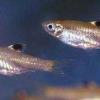 Eyespot
Eyespot  Goldfish
Goldfish  Siamese
Siamese  Koi
Koi  Pearl
Pearl  Glowlight
Glowlight  Crossbanded
Crossbanded 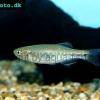 Yoma
Yoma  Orange
Orange 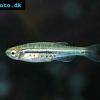 Dwarf
Dwarf  Zebra
Zebra  Rose
Rose  Red
Red  Arulius
Arulius  Tambraparni
Tambraparni  Fiveband
Fiveband  Bengal
Bengal 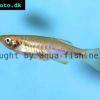 Tiger
Tiger  Malabar
Malabar  Queen
Queen  Hora
Hora  False
False  Redtail
Redtail  Rainbow
Rainbow  Flying
Flying  Garra
Garra  Black
Black 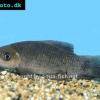 Purple
Purple  Burmese
Burmese  Dwarf
Dwarf  Isok
Isok  Rosy
Rosy 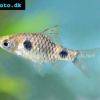 Two
Two 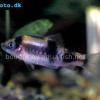 Melon
Melon 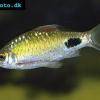 Black-spot
Black-spot  Golden
Golden  T-Barb
T-Barb  Ruby
Ruby  Checkered
Checkered  Rhomb
Rhomb  Gold
Gold  Tiger
Tiger  Cherry
Cherry  Brittan’s
Brittan’s 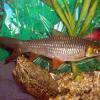 Greater
Greater  Long-band
Long-band  Twospot
Twospot  Reticulate
Reticulate  Cherry
Cherry  Denison
Denison  White
White  Lambchop
Lambchop  Harlequin
Harlequin